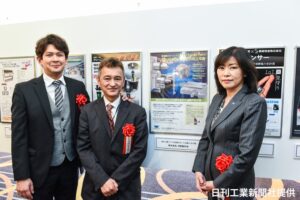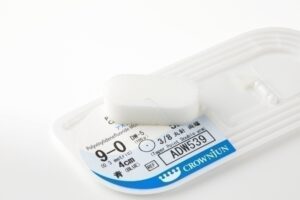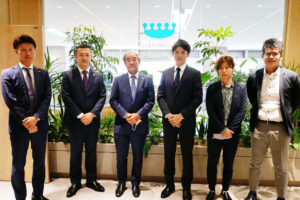
“If we use microsurgery to see and connect things that were previously invisible, we will be able to cure the disease on an immune level.”
Dr. Isao Koshima, director of the International Center for Lymphedema at Hiroshima University Hospital, explains in this way.
As a pioneer of microsurgery, he has saved the lives of many patients by restoring bodies that had suffered from illness or injury.
Currently, he performs approximately 200 surgeries a year for lymphedema treatment.
We interviewed him and sought the possibilities emerging from his techniques on microsurgery; technique using microscope and a extremely fine needle with a diameter of 0.05 mm to connect blood vessels and nerves as thin as 0.3 mm, which can be performed by only very few doctors.
What led you to become a microsurgeon (plastic surgeon)?
It all started on the June of my sixth year of undergraduate school. The slides of cleft lip and other cleft lip conditions in a special course astonished me. Although cleft lip surgery had been performed in oral surgery, I was astonished at how Dr. Soeda, who established the Department of Plastic and Reconstructive Surgery at the University of Tsukuba, was able to reconstruct faces that had been largely resected due to cancer beautifully. All the students were amazed at his work, but I think I was the only one who thought about going down that path.
My idea of entering a less crowded field of surgery also pushed me to the path to plastic surgery. I wrote a letter to Professor Tani, the first professor of the Plastic Surgery Department at Kawasaki Medical University. He advised me to gain experience in a large surgical institution before specializing in plastic surgery. To accumulate experiences, I searched for the busiest hospital in Tokyo and went through daytime surgeries to nighttime emergency responses.
How did the surgery you have developed spread?
It was in the 1980s when we developed the perforator flap method: a method grafting skin, fat tissue, and blood vessels without sacrificing muscles such as the rectus abdominis and latissimus dorsi. There were no doctors in Japan who were interested; no one thought such an operation would be possible. However, in the 1990s, an American doctor mastered this technique and they approached me to do live surgeries together. When we started conducting operations, the method spread to the U.S. and to the world. As a result, young doctors mastered it and it gradually became the standard. It seems that I have opened Pandora’s box in a good meaning; we have achieved something that was previously thought to be impossible.
In 2000, Professor Jiro Arata, who was then the Director of Okayama University Hospital, established the Department of Plastic Surgery, and I returned to my alma mater, Okayama University, as its first professor. In the university hospital playing a central role in cancer treatment in the Chugoku and Shikoku regions (located in the west side of Japan, including 9 prefectures), I performed cutting-edge surgeries, including reconstructive cancer treatment around the face, using microsurgical techniques. Even now, Okayama University Hospital continues to actively perform microsurgery.
Dr. Koshima has made achievements in various surgeries ranging from the reconstruction of lost body parts to lymphedema treatment. How did you start challenging various surgeries?
I have always kept in mind of lymphatic venous anastomosis since I successfully reconstructed breast with the perforator flap method. Furthermore, for the last 20 years, we have been working on the development of living nerve transplantation, although it has not yet been perfected. We believe that not only connecting the nerves, but also connecting them with an awareness of the protein and blood flow within the nerves will improve the effectiveness of the treatment.
Currently, what countries do international students come from?
We have international students from Egypt, Israel and Romania. Students who have heard my presentations and seen live surgeries overseas are eager to master this technique. By practicing together, rather than just watching, I am sure that they will truly understand the essence of why such intricate surgeries are necessary. Around 30 international students come to study each year, and I also share information on my website. They are dedicated learners and ask me many questions every day.
Please tell us about your prospects.
One of our major targets for the future is living cell transplantation. By transplanting cells with nutrient blood vessels attached, the transplanted cells will come back to life, and I think it will be possible to cure Parkinson’s disease and other diseases.
What I am focusing now is immune system. It is a field not well understood, but progress is being made as well as microsurgery 30 years ago. I expect that the time will come when microsurgery will be able to improve immune function as well.




